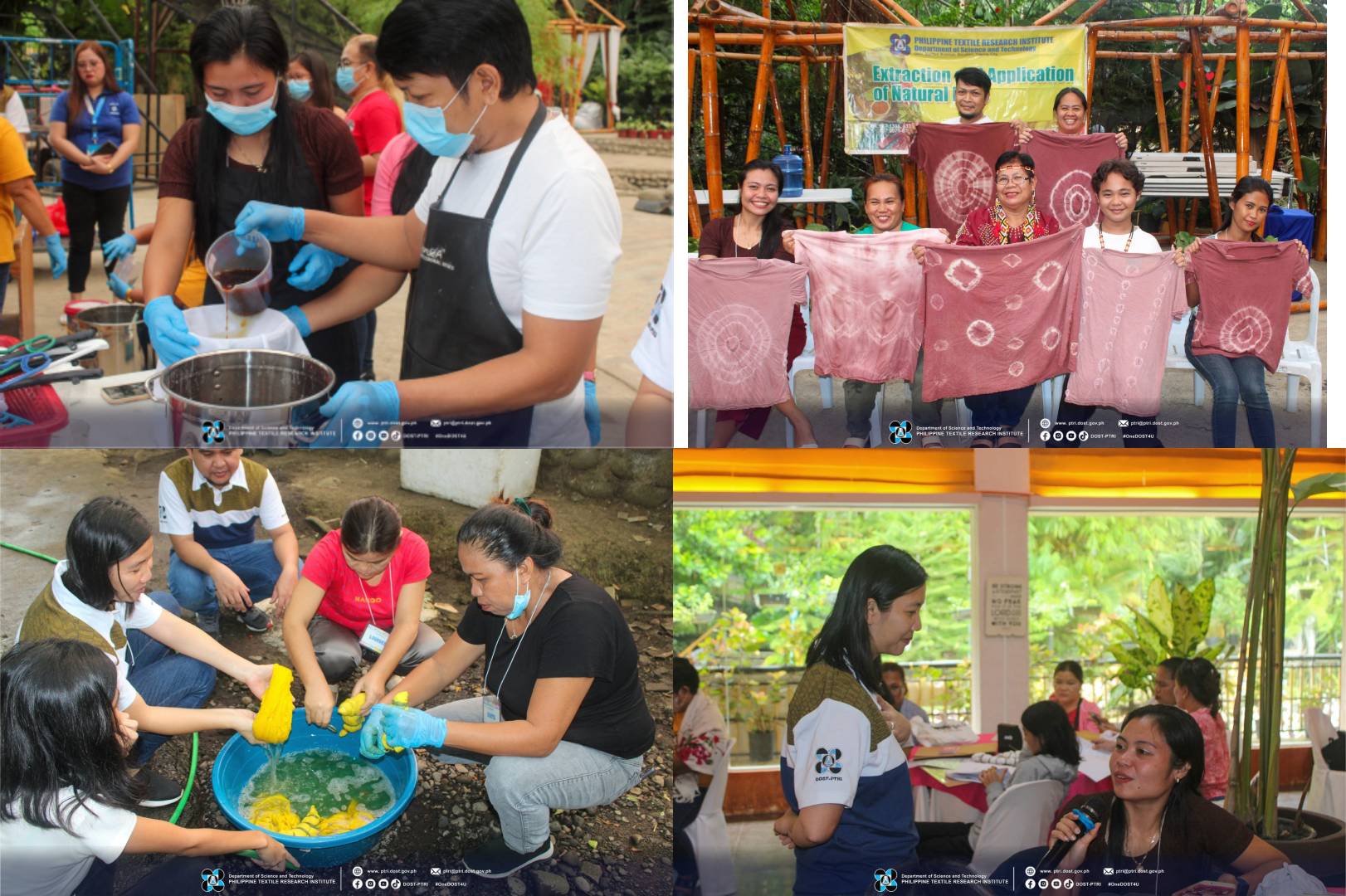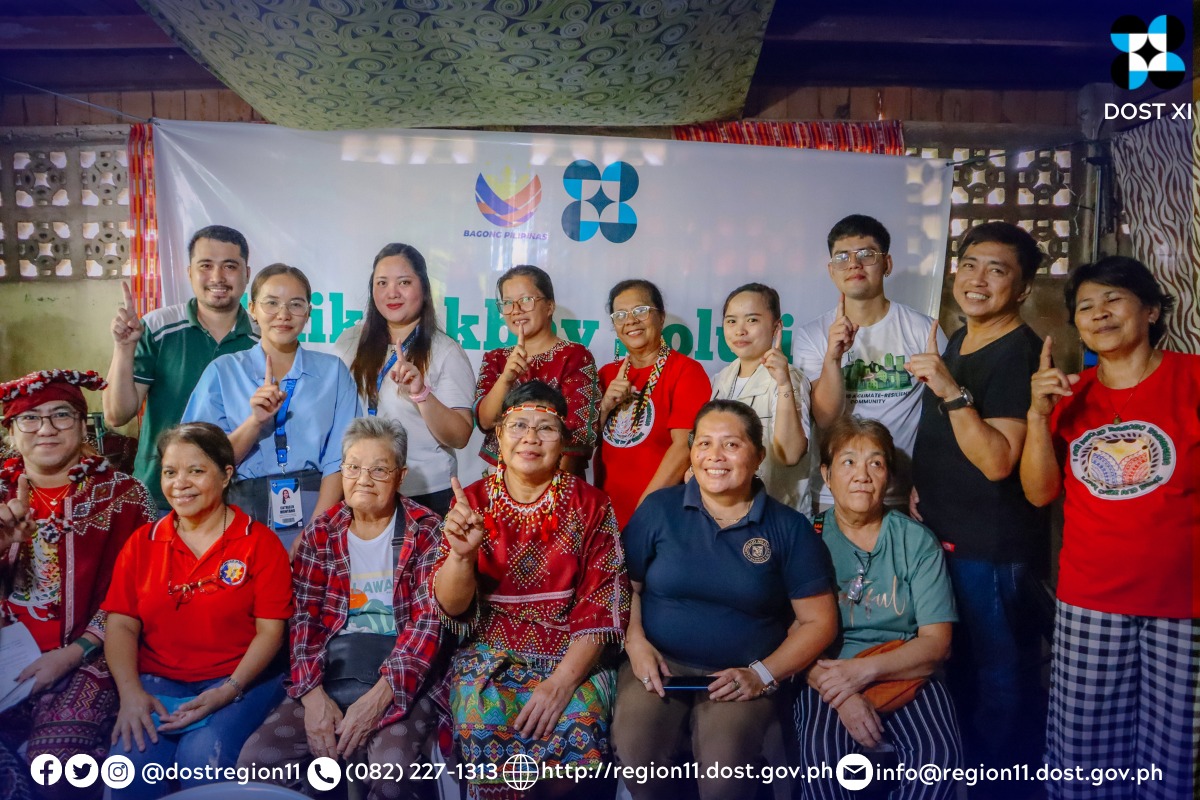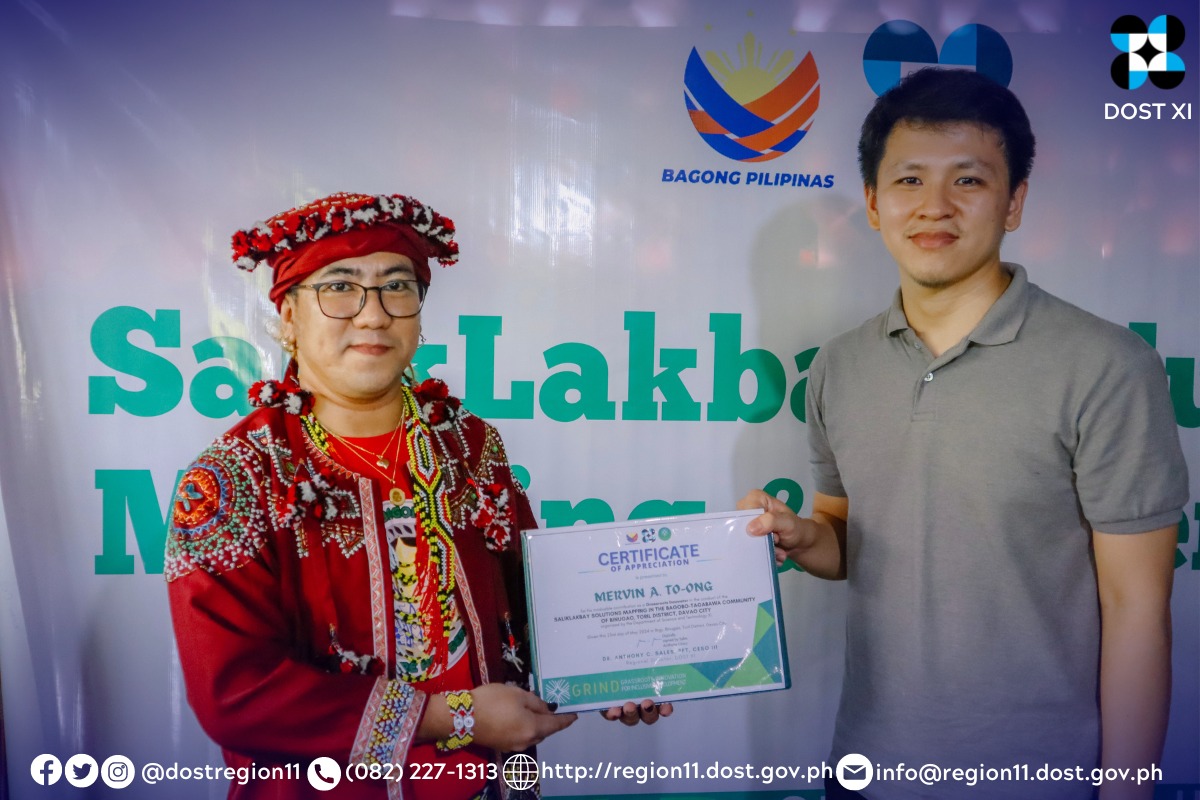Empowering the Bagobo Tagabawa Tribe through the GRIND Program

The Grassroots Innovation for Inclusive Development (GRIND) Program aims to uplift marginalized communities by fostering sustainable, locally-driven innovations. One such community benefiting from this initiative is the Bagobo Tagabawa tribe of Barangay Binugao.
Located in Davao, this indigenous group is featured on the talk-of-the-town science tourism TV show, Science Pinas. In this article, explore how the GRIND Program empowers the Bagobo Tagabawa tribe, bridging the gaps in skills, livelihoods, and cultural preservation.
The Bagobo Tagabawa Tribe
The tribe, part of the larger Bagobo ethnic group, has a rich cultural heritage rooted in ancestral traditions, including unique weaving, rituals, and agriculture. Despite their cultural significance, they face socio-economic challenges. In this regard, they need community-based development interventions to ensure the preservation of their cultural identity while promoting sustainable livelihoods.
Supporting their self-determination through initiatives is the GRIND Program. But what does this program do?
Challenges and Opportunities for the Tribe
The Bagobo Tagabawa tribe faces ongoing challenges, including limited access to resources and technological advancements. Despite these hurdles, the GRIND Program offers significant opportunities to scale and reach other indigenous communities in similar circumstances.
For continued success, the tribe requires more support from government agencies, NGOs, and local businesses, including funding, training, and exposure to traditional and digital media programs like Science Pinas. Fortunately, more and more S&T and R&D interventions are offered to these grassroots innovators, so they can grow and sustain their cultural heritage while enhancing their economic well-being.

GRIND Program for the Marginalized Communities
The GRIND program emphasizes grassroots innovation, ensuring that initiatives are rooted in the needs and strengths of the community. With this in mind, DOST plays a key role in providing technical support, resources, and expertise to help these communities develop, implement, and scale innovative solutions.
For everyone’s information, the program was launched by the Department of Science and Technology (DOST) - Region XI in 2019 to initiate GRIND first in the Davao Region. As a whole, it aims to empower marginalized communities like the indigenous people, women, out-of-school youth, and the other members of the informal sector.
Impact of Grassroots Initiatives to the Bagobo Tagabawa Tribe
Truth be told, the GRIND Program has made a significant impact on the Bagobo Tagabawa tribe by focusing on education, economic empowerment, and cultural preservation. In terms of capacity development, the tribe received skills training on:
- Improving their natural dye extraction process; and
- Making their textile production more efficient.
This intervention has enhanced their economic opportunities while maintaining traditional practices like the intricate "binadbad" tie-dying technique. Instead of rubber bands, the Bagobo Tagabawa uses abaca fiber strips to create their designs, holding significant cultural symbolism.

Apart from intervening through natural dye process training, GRIND also conducts assessments in preserving the arts and music of the Bagobo Tagabawa tribe.
Kudlong, a two-stringed musical instrument, is an endangered tribal guitar used to express their emotions, feelings, and tradition among others. In this way, it ensures that the tribe's heritage is passed onto future generations.
Current Initiatives: DOST XI Teams Up with Bagobo-Tagabawa Communities to Safeguard Indigenous Innovations
The Department of Science and Technology - Region XI, in collaboration with the Bagobo-Tagabawa Indigenous Cultural Communities and the National Commission on Indigenous Peoples - XI, has signed a Memorandum of Cooperation (MOC) to protect indigenous knowledge and innovations.
The DOST conducts a Saliklakbay Solutions Mapping and Immersion, which is a key element of the GRIND program being part of its Learning component, to identify and evaluate grassroots innovations within the Bagobo-Tagabawa communities.
The Saliklakbay Solutions Mapping and Immersion aims to:
- Identify and assess grassroots innovations;
- Document and evaluate grassroots innovations such as:
- Heirloom recipes or heritage foods;
- Artisanal or endangered crafts;
- Ethnobotanicals (medicinal plants, traditional practices, culinary spices);
- Solutions addressing health hazards; and
- Initiatives related to the circular economy;
- Assist Bagobo-Tagabawa communities in preserving their cultural heritage and promoting sustainable practices; and
- Empower the community through sustainable practices and scientific knowledge.

With these interventions, GRIND ensures cultural sensitivity and intellectual property protection, empowering the Bagobo-Tagabawa community while preserving their rich cultural heritage through ethical science and technology practices.
The Role of Science and Tourism in Promoting the GRIND Program
Science and tourism play a crucial role in promoting grassroots innovations of programs like GRIND. This is where DOSTv's Science Pinas comes in, giving a unique tour of how science drives growth in different industries including tourism in the region. The good thing is that viewers nowadays have various avenues where they can watch the episodes such as on GTV every Saturday at 9am with a simulcast on DZBB 594 Super Radyo, and replays on DOSTv's Facebook Page.
Philippine science and research travel programs like the Science Pinas provide a platform to showcase such innovations, offering economic opportunities while raising awareness about cultural heritage and traditional knowledge. Through GRIND, the Philippine tribes benefit from both scientific advancements and tourism opportunities.
In this way, it ensures the protection and growth of their unique crafts, agricultural practices, and traditions, fostering a balanced approach to cultural and economic development.
Frequently Asked Questions (FAQs)
What is Bagobo-Tagabawa known for?
The Bagobo people of Southern Mindanao, settled near Mt. Apo and the Davao Gulf, are known for creating high-quality textiles, clothing, weapons, shields, and accessories, all adorned with colorful beadwork. These intricate creations showcase the tribe's craftsmanship and cultural heritage.
What is Bagobo-Tagabawa textile?
Bagobo textiles, traditionally worn by women, are woven in the ikat style and dyed with natural colors. Known as Inabal, these clothes were once reserved for royalty and symbolize wealth. They are used in offerings to deities and given as gifts during rituals, holding deep cultural and spiritual significance in Bagobo society.
